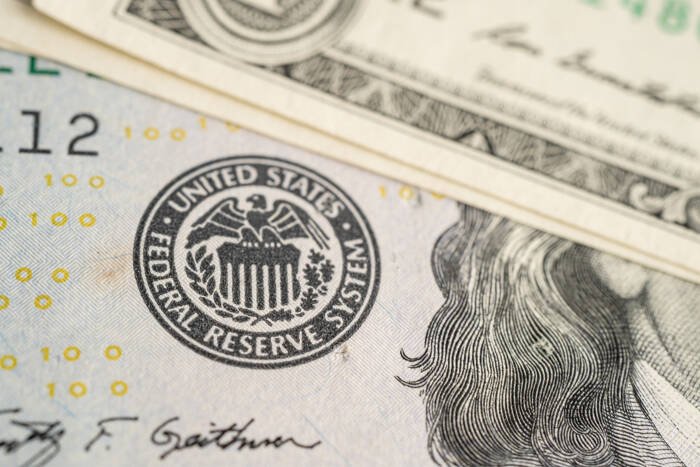Written by Convera’s Market Insights team
Cause for caution
George Vessey – Lead FX Strategist
FX markets have experienced a turbulent summer due to increasing concerns about a more pronounced US economic slowdown and questions are being raised about whether the Federal Reserve (Fed) has maintained high interest rates for too long. However, with volatility indices mean reverting, bolstered by a positive ISM services report in the US last week, easing recession fears, risk appetite has firmed, supporting pro-cyclical FX and halting haven demand.
A US or global economic slowdown phase presents a complex scenario for global FX markets: a slowing economy from above-trend output typically pressures the US dollar, but a slowdown leading to a clearly negative output gap tends to support the dollar due to its safe-haven status. For now, stability in equity markets has led investors to adjust their expectations for the Fed’s September meeting, now anticipating a 25-basis point rate cut instead of the previously expected 50 basis point cut. Short-dated yields have stabilised above 4% and the US dollar index around the 103 handle. Overall, though, due to its weakening growth and yield appeal, this transition phase for the dollar introduces near-term downside risks for the US currency but does not necessarily overturn the current strong dollar regime, especially while structural factors such as protectionism/tariff risks and increased US fiscal stimulus, continue to play a supporting role.
Today, the focus is on NFIB small business optimism and US producer prices. Investors may breathe a sigh of relief if July’s headline and core PPI come in softer than June as expected. Meanwhile though, in the geopolitical space, the US believes an Iranian attack against Israel may come as soon as this week, which might restrict any risk rally and keep the safe haven dollar bid.

Loonie directionless ahead of US CPI
Ruta Prieskienyte – Lead FX Strategist
The Canadian dollar remains steady near a two-week high as risk sentiment improves ahead of closely watched data this week, including U.S. consumer inflation on Wednesday. The USD/CAD is flat on a weekly basis, holding above its 55-day moving average of C$1.3718. One-week USD/CAD implied volatility is trending downwards and is the lowest among G10 peers. Although implied volatility expectations have ticked higher since Friday’s close, they remain in line with the year-to-date average.
Recent macroeconomic data from Canada revealed that building permits fell to C$9.92 billion in June, marking a 13.9% month-on-month decline, contrary to market expectations of a 5.6% rise. This is the largest such slump in over a year. Residential permits decreased by 11.5% month-on-month, while non-residential sector permits fell by 18.1% month-on-month.
Additionally, the latest weekly CFTC data released on Friday showed that futures accounts had trimmed record CAD short positions. Given that both relative macroeconomic conditions and monetary policy remain non-supportive for the CAD, we can expect the USD/CAD to grind higher amid an improved re-entry point for investors. However, we maintain that, given the still highly elevated CAD short positioning, USD/CAD gains will be somewhat limited.

Euro retreats at ZEW survey disappointment
Ruta Prieskienyte – Lead FX Strategist
Financial markets started the week calmly, with the European equity index, Stoxx50, ticking marginally higher on Monday, while the demand for government bonds eased further. The EUR/USD pair remained stable, fluctuating within a narrow range of $1.0915-$1.093 as investors adopted a cautious approach ahead of the crucial US CPI report scheduled for later this week. Given the importance of this data release, volatility is expected to remain subdued leading up to the event.
Germany’s ZEW Economic Sentiment report for August plummeted to its lowest level since January following a disappointing run of data and the recent turmoil on global stock markets. An expectations gauge compiled fell to 19.2 in August from 41.8 in July, much lower than the market consensus of 34. An index of current conditions also declined more than expected. It is likely that economic expectations are still affected by high uncertainty, which is driven by ambiguous monetary policy, disappointing business data from the US economy and growing concerns over an escalation of the conflict in the Middle East. Germany is facing the prospect of hardly any economic expansion this year, weigh down on Eurozone economic momentum.
Geopolitical tensions, particularly the ongoing Russia-Ukraine conflict, remain a background concern for investors. The recent rise in European gas prices to €41.4 per megawatt-hour, a 9-month high, underscores the potential risks. Historical patterns from 2022 suggest that any significant increase in fossil fuel prices tends to benefit the US dollar, as it typically signals broader economic risks that drive investors toward safer assets like the greenback.

Oil climbs towards $80 mark
Table: 7-day currency trends and trading ranges

Key global risk events
Calendar: August 12-16

All times are in BST
Have a question? [email protected]
*The FX rates published are provided by Convera’s Market Insights team for research purposes only. The rates have a unique source and may not align to any live exchange rates quoted on other sites. They are not an indication of actual buy/sell rates, or a financial offer.







